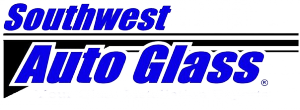
Imagine: You’re cruising down the highway, enjoying the ride, when suddenly your car alerts you to an obstacle in your path. You come to a quick stop, avoiding a potential collision. What made this possible? Your car’s Advanced Driver Assistance Systems (ADAS) only.
ADAS is revolutionizing the way we drive, making our roads safer and our journeys more enjoyable. However, as with any complex technology, ADAS requires proper maintenance and calibration to function at its best. So let’s dive into the importance of maintaining ADAS systems and why proper calibration is crucial for safe and effective operation.
What is ADAS, and how does it work?
ADAS is a set of features and technologies designed to assist drivers in various tasks, such as lane keeping, adaptive cruise control, and collision avoidance. These systems use sensors, cameras, and other equipment to monitor the vehicle’s surroundings and provide warnings or assistance to the driver as needed.
However, for ADAS to function properly, it requires precise calibration. Calibration is the process of adjusting and aligning the sensors and cameras to ensure they are accurately detecting the vehicle’s environment. Even minor changes in calibration can affect the accuracy of the ADAS systems, potentially leading to incorrect warnings or even failures.
Why is proper calibration so crucial?
Let’s explore some key reasons:
Safety: The primary reason for ADAS is to improve driver safety. However, if the systems are not calibrated properly, they may provide incorrect or delayed warnings, leading to accidents or near-misses. For example, if the lane departure warning system is not calibrated correctly, it may not alert the driver when they are drifting out of their lane, putting them and other drivers at risk.
Performance: ADAS is designed to enhance the performance of your vehicle, providing smoother rides and more efficient driving. However, if the systems are not calibrated properly, they may not perform as intended, leading to decreased performance and efficiency. For example, if the adaptive cruise control is not calibrated correctly, it may not maintain a safe distance from the vehicle in front, leading to sudden braking and poor performance.
Cost Savings: Proper calibration of ADAS systems can also save you money in the long run. If the systems are not calibrated correctly, they may not perform efficiently, leading to increased fuel consumption and wear and tear on your vehicle. Additionally, if the systems fail due to improper calibration, it may result in costly repairs or replacements.
How often should ADAS systems be calibrated?
The answer depends on several factors, including the manufacturer’s recommendations, the type of system, and the vehicle’s usage. Some manufacturers recommend calibration every time the windshield is replaced, while others suggest annual calibration or calibration after significant repairs or accidents.
It’s important to note that calibration should only be performed by trained and certified technicians with the proper equipment and tools. Attempting to calibrate ADAS systems on your own or using non-certified technicians can result in improper calibration and potentially dangerous driving conditions.
Regular maintenance of ADAS systems is also crucial for optimal performance. This includes keeping the sensors and cameras clean and free from obstructions, such as dirt or snow, and ensuring the system software is up-to-date.
Factors affecting the performance of ADAS
Apart from regular maintenance and calibration, there are a few other factors that can affect the performance of ADAS systems.
Environmental Conditions: Environmental factors such as heavy rain, fog, or snow can interfere with the sensors and cameras used by the systems. It’s important to keep this in mind and adjust driving behavior accordingly in adverse weather conditions.
Road Conditions: Poorly marked or damaged roads can make it difficult for the systems to accurately detect lane markings and other objects, leading to errors in the system’s performance. This is why it’s important to regularly inspect and maintain roadways to ensure they are in good condition.
While the importance of proper calibration cannot be overstated, it’s worth noting that ADAS systems are not foolproof. Drivers should never rely solely on ADAS to make driving decisions or assume that the systems will always function perfectly. Instead, they should continue to practice safe driving habits, such as maintaining a safe distance from other vehicles and keeping their eyes on the road.
Additionally, it’s essential to keep in mind that ADAS systems are not a substitute for regular vehicle maintenance. Even with properly calibrated ADAS systems, a poorly maintained vehicle may not perform as intended, leading to decreased safety and efficiency.
Finally, it’s worth mentioning that ADAS technology is continually evolving and improving. As new systems and features are developed, it’s important to stay up-to-date with the latest information and recommendations from manufacturers and experts. This includes understanding the limitations and capabilities of ADAS systems and how to properly use them.
ADAS systems are transforming the way we drive, making our roads safer and more efficient. However, for these systems to function properly, they require proper calibration and maintenance. By ensuring ADAS calibration is correctly performed and regularly maintained, you can enjoy the benefits of these advanced technologies while staying safe on the road.
